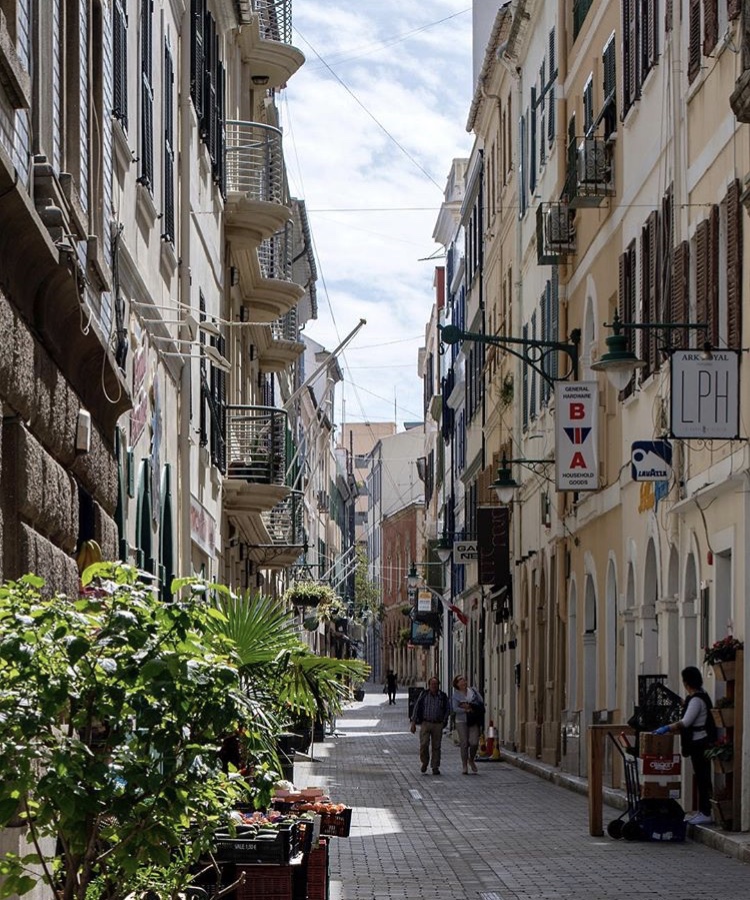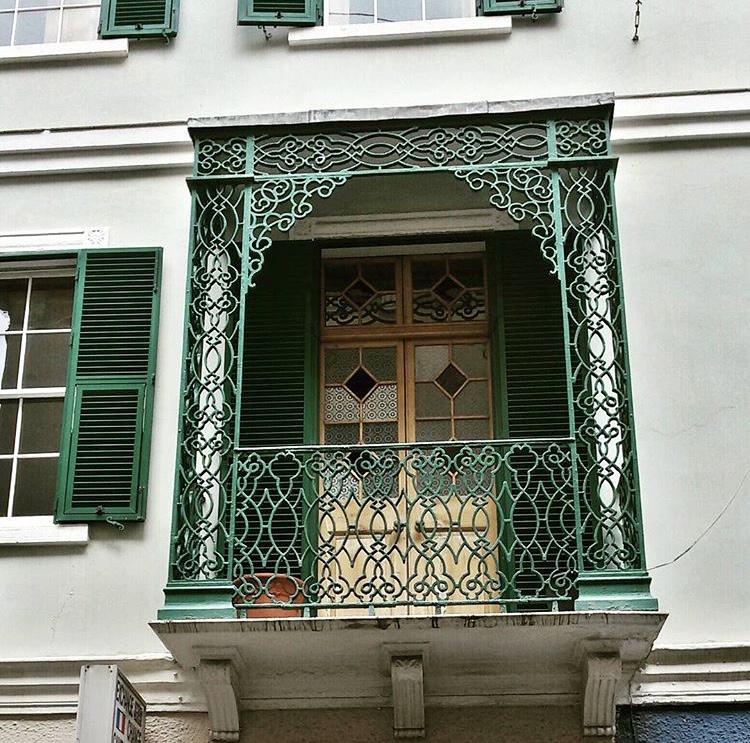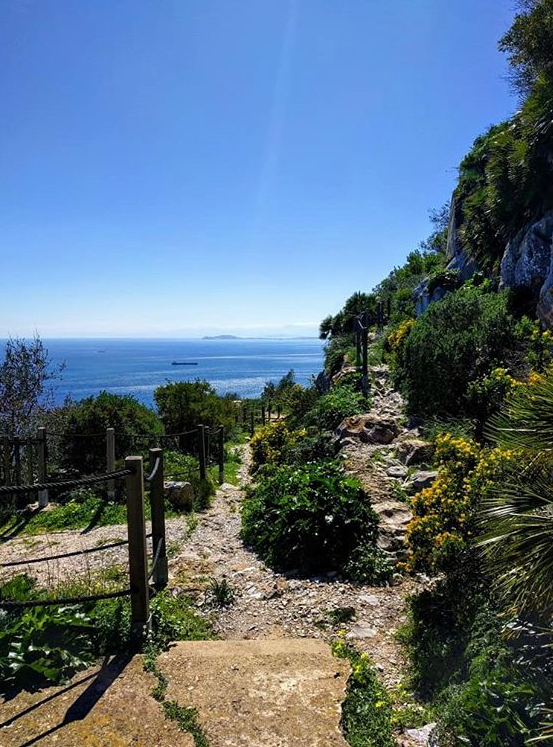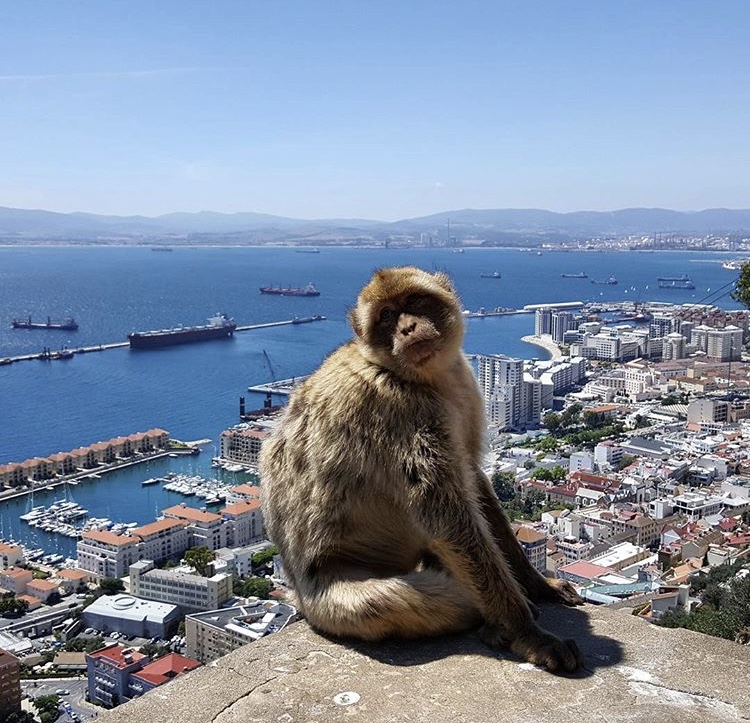Gibraltar: Britain’s forgotten city
The Rock of Gibraltar is the gateway to the Mediterranean Sea, placed at the southernmost point of Europe. While locals call it “The Rock”, it was named the two “Pillars of Hercules” by the Greeks.
According to the legend known as “The Twelve Labours of Hercules", demigod Hercules split through the mountain range that sealed the Mediterranean Sea from the Atlantic Ocean with his sword.
It is mid-afternoon in the first week of April, and the sun is dancing through the windows following a twenty-degree start. Surrounding me are bulletproof walls made of stone, as jazz music plays in the background and customers enjoy their homemade pizza. Built from the ground up stands one of the last barracks from The Great Siege, now a well-known modern-day Italian named Café Solo. In front of me sits my mother, Julie Locke, restaurant owner and Gibraltar local. Her pristine fingernails rhythmically tap on the table as we sit beneath a chandelier of sorts, not a glamorous thing, yet bewitching me none the less with its pendulous features.
Having travelled to and from here for 18 years of my life I’m convinced that I have Gibraltar all figured out. After days upon days of traversing the city – from the tip of the rock to the port decks in Europa point – I’ve found that finding your home away from home breeds a kind of love, the kind of love you can choose. However, looking back perhaps I went too far, too fast – travelling to its diverse forests and sandy beaches with abandon and left feeling as if there is nothing left to discover, no mysteries left to unearth or relive. However, seeing Gibraltar through my mother’s eyes, I hope to regain the love I once had.
Following the lead of my mother, we first explore what is “right in front of us”. Grand Casemates square is Gibraltar’s hub of life, with pubs holding never seen before Lord Nelson memorabilia, as most of it is fake, and dance clubs featuring lime green outside seating arrangements. During the summer time those seats at occupied by cruise lovers from all over the world. From now until then time stands at a halt, with the square being a landing zone for pigeons and a chasing ground for stray cats. “That’s where pirate Benito de Soto was hanged,” Julie says pointing to a public bench. “Some say in the dead of night you can still hear his menacing laugh as he was dropped to his death”. It was after the Great Siege that the British demolished what was left of the buildings in the square to make space for the gallows that hanged countless of offenders. A short while after public seating was built so everyone could make a day of it.
“There’s something embarrassing about having strangers watch you take your last breaths, that’s why they let everyone watch I suppose,” Julie suggests.
Taking a step back, allowing the veil of modern day to cover the square once again, we make our way across the cobbled stones that pave the town. Walking up Main Street there is a never-ending line of shops, selling things from tax-free alcohol and tobacco to “I love Gibraltar” baseball caps.
Instead of my usual childhood route up Main Street, my mother takes me down a narrow path, flaking paint scales the buildings and the chatter of locals bounces off the pastel walls - Irish town, towering above me are Georgian style buildings – all that is left of The Great Siege when the street was once lined with military barracks. “This is where they housed the lower ranking Irish soldiers, hence the name Irish town” Julie explains staring blankly down the street. Now in place of the barracks stands three-story buildings, the top two floors acting as homes to the locals and the ground floor accommodates mom and dad run take away shops, selling some of the best sausages rolls to deliciously crispy fish and chips.

We make our way down the street trying to miss the pigeons at our feet, “Do you remember Sacarello’s?” Julie asks. Sacarello’s, not a coffee shop my childhood self could forget, “The best tea and toast around” I reply. Countless mornings spent buttering my toast, adding three spoonfuls of sugar to my tea and a half a jug of milk - being eight at the time my brews weren’t the best. Sacarello’s still stands today the third corner down Irish town, and you can always expect a welcoming smile from all the staff. Juani Torres, a worker at the coffee shop and Spanish local tells the tale of when merchants roamed the streets at all hours of the day. “Everything was fresh and cheap, now it’s overpriced, and you don’t get what you pay for.” Juani says, “The air always smelt like freshly ground coffee, it made getting fruits and vegetables from the street merchants a lot easier, the aroma felt like a hug.”
The Old Town of Gibraltar is just 15 minutes’ walk from the town centre. It is a quiet and quirky village, the three-story buildings that surround me have a rhythmic regularity to them - 16th century Genoese shutters held open wooden by pegs, casement windows, ordnance style arched doorways and English regency ironwork balconies all come together to create Gibraltar’s national style. “The village tells a story through its architecture” Julie began, “the old town once separated the villagers from the military during the time of the Great Siege, it wasn’t until most of the houses were destroyed that they “joined forces” to rebuild and create what you see now.”

The village was built descending down the side of Gibraltar Rock, walking up the rock through the town is a priceless experience. If you walk far enough you will reach “Calle Comedia” or “Castle Street” in English, it will lead you on your way to the Moorish Castle.
The Moorish castle is perched on the North side of Gibraltar rock, overlooking Casemates Square. The battle scars, left from past sieges, are plentiful – bullet holes cover the castles crumbling walls, they are displayed proudly along with the flag of Gibraltar positioned in the centre of the castle. There were many attacks on the castle but every time it stood strong. “The medieval defenders were strong worriers, ruthless” Julie says, “they were ordered to protect the castle at all costs, during an attack they captured the Count of Niebla and suspended his body from the walls of the castle in a net”. The Medieval defenders were men I heard of as a child when I didn’t do as I was told, “you remember that do you?” Julie asks, “I remember never wanting to go to sleep in case they captured me” I reply, my eyes darting back and forth searching the castle for any Medieval defender’s movement.
There is another way to get to this medieval castle – the Mediterranean steps. They start at the southernmost part of Gibraltar Rock – Europa Point and zig-zag their way up. The trek is tiresome and with the worn away railings and tree roots jutting out from every which way you’re your limits will be tested. However, the views on the way are worth every step and scrape.

After an hour we make our way to the Upper Rock Nature Reserve. Its late afternoon, the sun is beating down on my back but the cool breeze sweeping its self-up the rock is keeping me going.
A few minutes later we come across one of Gibraltar Rocks inhabitants, the Barbary macaques, known as apes to the locals, in their “den”.
Ape’s Den is one of Gibraltar’s biggest tourist attractions, it was named after the hundreds of macaques hanging round the worn-down building.
These photobombing, food snatching macaques will make your day, granted that you treat them with the respect they deserve, they are “royalty” on the rock. Any macaques that get their own building named after them spells higher class in my eyes.
“Many say that there is a legend surrounding the apes, that if they were to leave the rock the British will leave with them,” Julie claims.

Apes Den is only a 10-minute walk from St. Michael’s Cave, open every day it brings the most adventurous of people. The second you step foot into the cave you are surrounded by jagged edges of the rocks around you, and a damp stickiness wraps itself around you that won’t let go until you leave – The Rocks security blanket. An eerie music fills the cave, echoing around the walls leaving no one untouched by its sound. “The cave is enchanting at night when the Gibraltar choir come to practice,” says Julie, “their angelic voices can be heard from the very entrance of the cave, and it almost drags you in.” Multi-coloured beams shoot out from every angle bouncing off the thousand-year-old stalagmites and stalactites, a magical sight. We move to the lower parts of the cave, the temperature hasn’t changed since we came in, it is constant all year out. “Do you remember how the apes came to Gibraltar?” says Julie, “through Leonara’s Cave” I reply. The story of how Leonara’s Cave was an undersea tunnel to Africa that allowed the apes to come to Gibraltar, was told to me as a child when my curiosity got the better of me.
Coming to an end of our cave journey, we take a take a brisk 20-minute walk to the Great Siege Tunnels. “Legend has it that General Elliot told his soldiers that the first to get a cannon into the Notch would get $1000,” says Julie, “no one ever saw that $1000”. The Notch is an area on the north side of the Rock, that had the perfect ledge for General Elliot’s men to stand and dig a tunnel large enough to fit the cannon and themselves – The Great Siege tunnel.
Throughout history, many have wanted a piece of Gibraltar: The Moors, Spanish, Italians, Germans, and the French. Few got far. During the Great Siege of 1779 Gibraltar was fought over by the French and Spanish. The British military were up against 13,000 Spanish and French troops. Outmanned three to one, the British soldiers stood their ground before moving up the Rock and digging an underground ‘city’ that matched their cunning and vexatious minds. The siege lasted four years, using the rock to their advantage the British were able to wipe out the intruders. Gibraltar has been British ever since. “Since the peace of 1783, the greatest part of the town has been rebuilt and (which is rather to be regretted) on the old foundations.” writes John Drinkwater, son of a naval surgeon, in his novel not long after the Great Siege.
The slope leading inside tunnels is like a never-ending stretch. Lights drilled into the side of the tunnel leading the way, as we crunch over and continue our descent into the tunnel. “These men must have survived on dust,” Julie says pointing to the 200-year-old cabinet holding the week’s rations. The tunnel was completed three months after the Great Siege had ended, it leads 25 meters into the Rock and branches off into many different passageways, much like an ant’s nest, “Some of these lead to the World war 2 tunnels” Julie says, “the soldiers called it their underground city”. Around every corner in the tunnel are manmade soldiers in uniform standing at attention. Arriving at the Notch the 300-year-old cannon mounted on the rock is surrounded by four soldiers.
The ingenuity of the British army was at its best during the Great Siege, “except for when they ruined their own buildings using a makeshift mortar to throw rocks at their enemies” says Julie. Not one of their finest moments I must admit – soldiers were made to fill the entrance of the tunnel with rocks and propel them down the side of the Rock at the enemy.
After a 45-minute walk, we find ourselves coming to the end of our journey, at the foot of the Two Pillars of Hercules statue. A large trophy looking statue is stationed before me, it oval centre spells out ‘The ancient world’ and below that a plaque, telling the tale of Hercules’s labours. “The legend is a way of adding mystery to the world around us,” says Julie “Do you remember when you asked how The Rock came to be? we told you it was once a mountain range that stretched further than the eye can see, bonding us to Africa, until Hercules split it in two.” Something my childhood self didn’t know was a tale until now.

0 Comments Add a Comment?